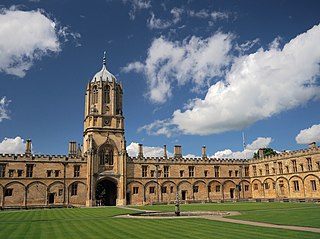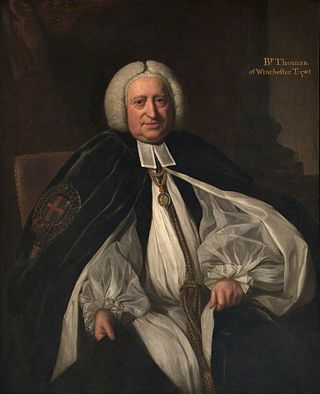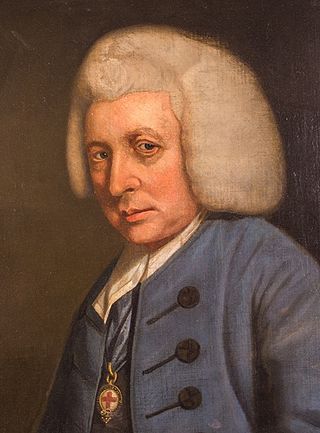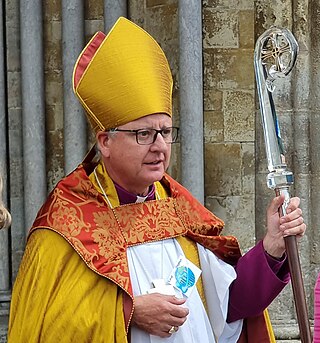Related Research Articles

Christ Church is a constituent college of the University of Oxford in England. Founded in 1546 by King Henry VIII, the college is uniquely a joint foundation of the university and the cathedral of the Oxford diocese, Christ Church Cathedral, which also serves as the college chapel and whose dean is ex officio the college head.

Henry Parry Liddon (1829–1890), usually cited as H. P. Liddon, was an English theologian. From 1870 to 1882, he was Dean Ireland's Professor of the Exegesis of Holy Scripture at the University of Oxford.
The Lord High Chancellor of Ireland was the highest judicial office in Ireland until the establishment of the Irish Free State in 1922. From 1721 to the end of 1800, it was also the highest political office of the Irish Parliament: the Chancellor was Speaker of the Irish House of Lords. The Lord Chancellor was also Lord Keeper of the Great Seal of Ireland. In all three respects, the office mirrored the Lord High Chancellor of Great Britain.
Eustace was the twenty-third Lord Chancellor of England, from 1197 to 1198. He was also Dean of Salisbury and Bishop of Ely.
Thomas Chaundler (1418–1490) was an English playwright and illustrator.

Durham College was a college of the University of Oxford, founded by the monks of Durham Priory in the late 13th century and endowed by Bishop Thomas Hatfield in 1381.

John Gilbert was Archbishop of York from 1757 to 1761.
Richard Baylie was twice President of St John's College, Oxford, twice Vice-Chancellor of Oxford University, Archdeacon of Nottingham and Dean of the Salisbury Cathedral.
Thomas Langley was an English prelate who held high ecclesiastical and political offices in the early to mid-15th century. He was Dean of York, Bishop of Durham, twice Lord Chancellor of England to three kings, and a Pseudocardinal. In turn Keeper of the King's signet and Keeper of the Privy Seal before becoming de facto England's first Foreign Secretary. He was the second longest serving Chancellor of the Middle Ages.
James Goldwell was a medieval Dean of Salisbury and Bishop of Norwich.

Salisbury Cathedral School is a co-educational independent school in Salisbury, Wiltshire, England, which was founded in 1091 by Saint Osmund. The choristers of Salisbury Cathedral are educated at the school.

John Thomas was an English bishop.

John Fisher was a Church of England bishop, serving as Bishop of Exeter, then Bishop of Salisbury.

John Hume DD was an English bishop.

John Thomas (1691–1766) was an English Bishop of Lincoln and Bishop of Salisbury.
Vernon Philip White is an English Anglican priest and theological scholar.
Thomas Whyte was an English clergyman and academic at the University of Oxford.
John Somerset or Somerseth was an English physician and administrator.

Stephen David Lake is an Anglican clergyman and author who has been Bishop of Salisbury since April 2022; he was previously Dean of Gloucester from June 2011.
References
- ↑ Getz, Faye (2004). "Kymer, Gilbert (d. 1463)". Oxford Dictionary of National Biography . Oxford University Press . Retrieved 16 March 2011.
- ↑ "Leaden Hall". Map of the Close. Salisbury Cathedral, UK. Archived from the original on 28 September 2011. Retrieved 16 March 2011.